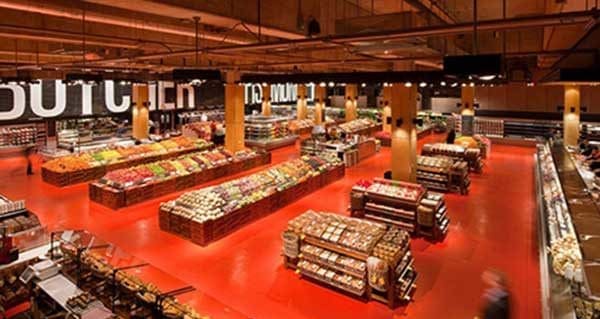 This is turning into a very challenging year for the Canadian food industry.
This is turning into a very challenging year for the Canadian food industry.
Recent Statistics Canada numbers indicate that grocers are in trouble. Food inflation is above two percent for the first time since April 2016. This is typically good news for grocers, increasing their margins. But given major headwinds affecting the industry, grocers need to get even more creative to reassure investors.
Loblaw Companies Ltd. has reason to be particularly worried, having just posted underwhelming fourth-quarter results. Food retail sales dropped by 1.2 percent and total revenues slipped by 0.9 percent.
Despite strong sales at subsidiary Shoppers Drug Mart, Loblaw executives indicated that reforms affecting the price of generic drugs will impact profits.
But higher wages seem to be the big worry for the company, as provincial governments nudge toward $15-an-hour minimum wages. And StatsCan numbers may suggest where things are headed with minimum wage increases.
Ontario minimum wage hikes likely pushed menu prices higher in January, especially in fast food, where most of the income earners are paid minimum wage. And this is likely just the beginning. After a 22 percent hike on Jan. 1, Ontario’s minimum wage is due to increase again to $15 an hour on Jan. 1, 2019.
Alberta will join the $15-an-hour club in October and British Columbia intends to pass the $15 mark in 2021. Other provinces, like Quebec and Nova Scotia, are thinking about following suit. The $15 campaign will not go away any time soon.
Obviously, most of us agree that people should earn a decent living. The challenge with Ontario, though, is how quickly wage hikes are being implemented. A 32 percent increase in 12 months is simply irresponsible.
Restaurants – many of them family-owned – will have difficulty coping.
The grocery business is also being affected by higher minimum wages but indicators are subtler. Here’s one example: The price of tomatoes, one of the most popular produce items, jumped by more than 30 percent in a month. This was likely because of minimum wage increases, since it’s unusual for the price of any fruit or vegetable to increase by even four percent in a single winter month (particularly when the value of the Canadian dollar remains relatively stable against its U.S. counterpart, as it has).
For Loblaw, the Brampton, Ont.-based retail giant, it’s a godsend to see food inflation rise again. It means it can tweak certain price points and increase margins without most people noticing. But the company will need to get very creative. Store traffic is an ongoing issue, so converting to online activity will be critical, especially with what’s on the horizon.
In the U.S., Amazon continues to create havoc in the grocery landscape. Bloomberg just reported that two grocers, Winn-Dixie parent Bi-Lo and Tops Friendly Market, could declare bankruptcy this month. This is likely due to the ominous shakedown in the industry caused by Amazon and its recent acquisition of Whole Foods.
This is only the beginning. Amazon is slowly capturing market share in groceries, destroying well-established players one by one, as it did in other sectors like books.
Loblaw is realistically concerned that Amazon will make its way into Canada.
But there’s still hope. Higher menu prices may slow down the food service sector’s string of successes in recent years. Food and labour are a restaurant’s highest expenses, creating an opportunity for grocers to commit more thoroughly to both ready-to-eat and ready-to-cook spaces. This could be Loblaw’s next move, but they clearly need to think differently about how to grow the business.
Interestingly, Loblaw made no mention of its $25 gift certificate campaign while posting its fourth-quarter results. The gift cards were launched because of its self-confessed involvement in the bread price-fixing scheme in December.
Nonetheless, StatsCan numbers confirm what many suspected: bread prices are dropping across the country. BMO stated earlier this year that bread prices were down 2.5 percent since December, after Loblaw disclosed its involvement in the scheme. According to StatsCan, bread prices dropped 1.7 percent in January alone. In fact, most bakery products seem cheaper than they were a month ago.
This may be a sign that grocers are trying to make amends with the public, since the story has garnered so much attention. Only time will tell if the aggressive discounting we’ve seen in stores will continue.
But we do know that the Canadian food industry is facing increasing pressure on several fronts.
Dr. Sylvain Charlebois is senior director of the agri-food analytics lab and a professor in food distribution and policy at Dalhousie University.
Sylvain is a Troy Media contributor. Why aren’t you?
For interview requests, click here. You must be a Troy Media Marketplace media subscriber to access our Sourcebook.
The views, opinions and positions expressed by columnists and contributors are the author’s alone. They do not inherently or expressly reflect the views, opinions and/or positions of our publication.


